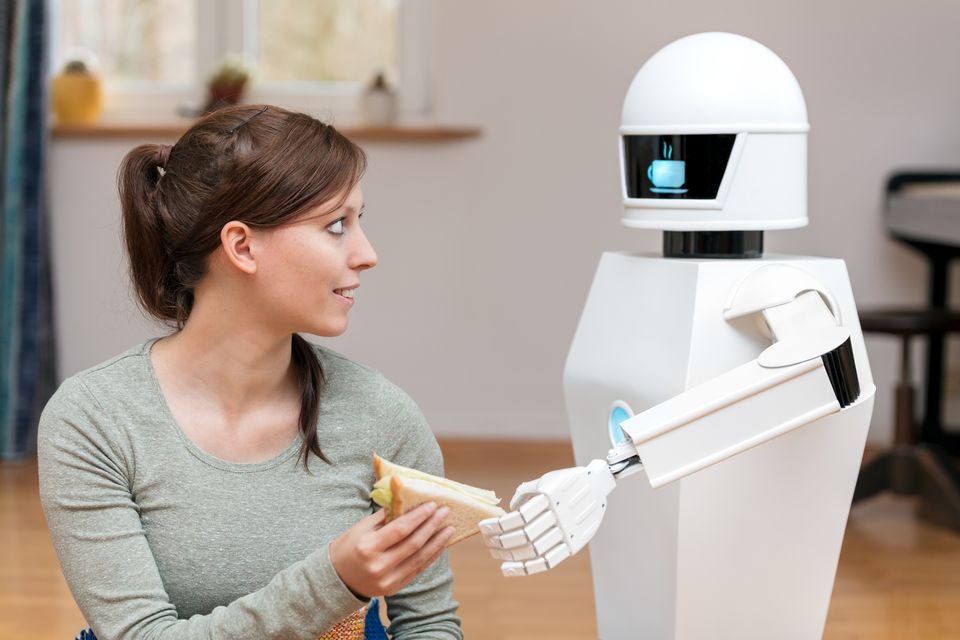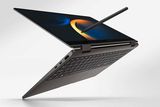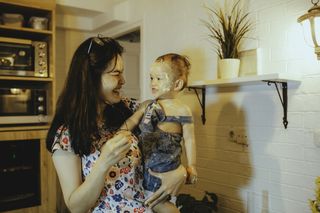Apple turns to robots with new smart-home project that mimics human movements
Apple is hoping to capitalise on AI improvements. Stock photo: Getty
Tech giant Apple is investigating a push into personal robotics, a field with the potential to become one of the company’s ever-shifting “next big things”, according to people familiar with the situation.
Engineers at Apple have been exploring a mobile robot that can follow users around their homes, said the people, who asked not to be identified because the project is private.
The iPhone-maker has also developed an advanced table-top home device that uses robotics to move a display around, they said.
Though the effort is still in the beginning stages – and it’s unclear whether the products will ultimately be released – Apple is under growing pressure to find new sources of revenue. It scrapped an electric vehicle project in February, and a push into mixed-reality goggles is expected to take years to become a major money-maker.
With robotics, Apple could gain a bigger foothold in consumers’ homes and capitalise on advances in artificial intelligence. But it’s not clear what approach it might take. Though the robotic smart display is much further along than the mobile bot, it has been added and removed from the company’s product road map over the years, according to sources.
The robotics work is happening within Apple’s hardware engineering division and its AI and machine-learning group, which is run by John Giannandrea.
Matt Costello and Brian Lynch – executives focused on home products – have overseen the hardware development. Still, Apple hasn’t committed to either project as a company, and the work is still considered to be in the early research phase. A spokeswoman declined to comment.
Before the EV project was cancelled, Apple told its top executives that the company’s future revolved around three areas: automotive, the home and mixed reality. But now the car isn’t happening and Apple has already released its first mixed-reality product, the Vision Pro headset. So the focus has shifted to other future opportunities, including how Apple can better compete in the smart-home market.
The tabletop robotics project first excited Apple executives a few years ago, including hardware engineering chief John Ternus and members of the industrial design team.
The idea was to have the display mimic the head movements – such as nodding – of a person on a FaceTime session. It would also have features to precisely lock on to a single person among a crowd during a video call.
But the company has been concerned about whether consumers would be willing to pay top dollar for such a device. The primary obstacle has been disagreement among Apple executives over whether to move forward with the product at all, according to the sources.
Near its campus in Cupertino, California, Apple has a secret facility that resembles the inside of a house – a site where it can test future devices and initiatives for the home. Apple has been exploring other ideas for that market, including a new home hub device with an iPad-like display.
Apple’s pursuit of the “next big thing” has been an obsession since the Steve Jobs era. But it’s become harder to envision a product that could ever match the iPhone, which accounted for 52pc of the company’s $383.3bn in sales last year.
A car had the potential to add hundreds of billions of dollars to Apple’s revenue, in part because the vehicles were expected to sell for roughly $100,000 a pop. Few other products have that kind of growth potential, but Apple has a number of projects in the works, including an updated Vision Pro, touch-screen Macs, AirPods with built-in cameras, and new health technologies like a non-invasive blood sugar monitor.
Join the Irish Independent WhatsApp channel
Stay up to date with all the latest news














